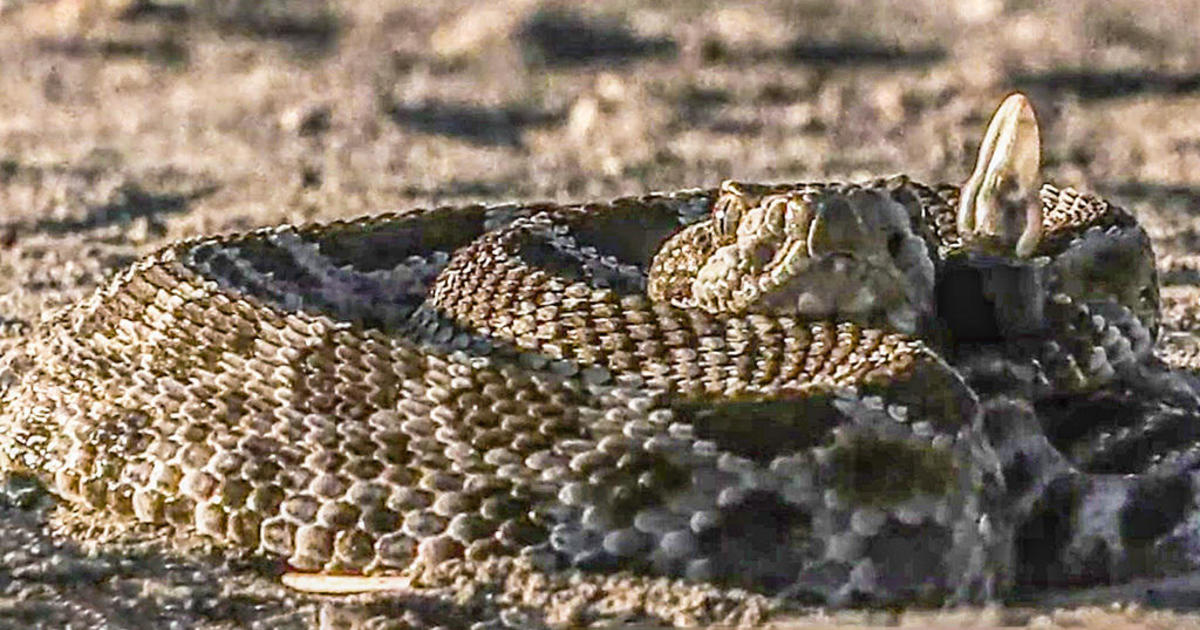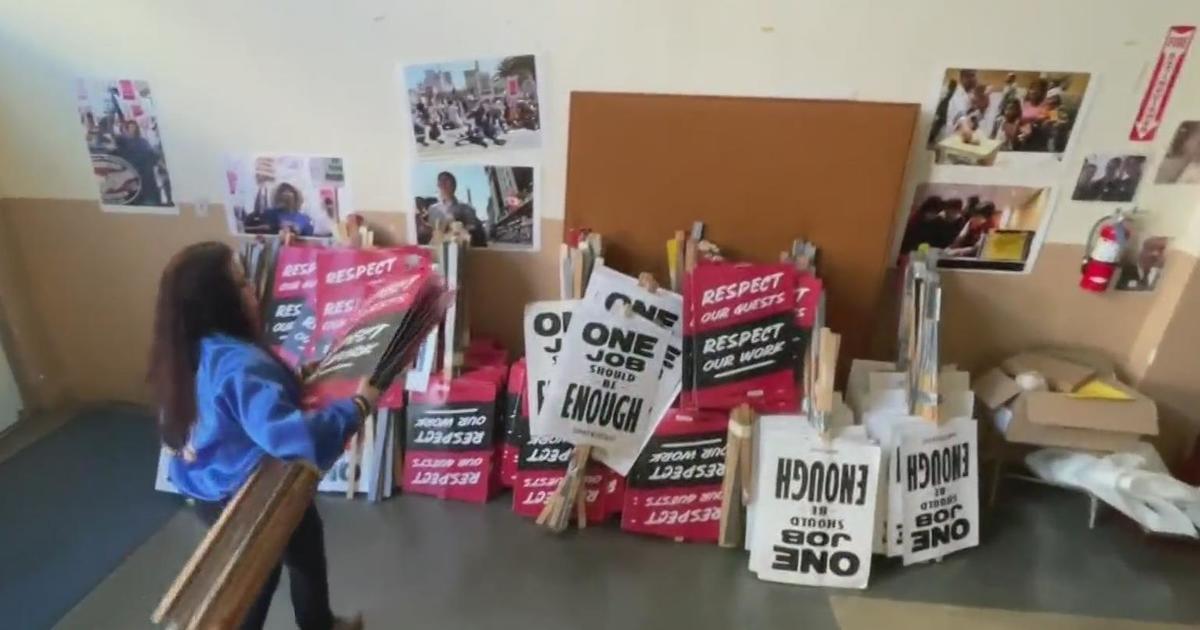Hundreds Perish In Devastating Nepal Quake; Historic Buildings Crumble, Deadly Avalanches On Everest
KATHMANDU, Nepal (CBS/AP) -- Tens of thousands of people prepared to spend the night in the open under a chilly and thundery sky after a powerful earthquake shook Nepal on Saturday, killing more than 1,800 people, collapsing modern houses and centuries-old temples, and triggering a landslide on the slopes of Mount Everest. Officials said the death toll will rise as more reports from far-flung areas come in.
The magnitude 7.8 earthquake, which originated outside the capital Kathmandu, was the worst tremor to hit the poor South Asian nation in over 80 years. It was so powerful that it was felt all across the northern part of neighboring India, Bangladesh, Tibet and Pakistan where a total of 50 people died. The death toll in Nepal was 1,130, but it is almost certain to rise, said deputy Inspector General of Police Komal Singh Bam.
More than two dozen aftershocks jolted the area after the first quake, which struck just before noon. At the time, Shrish Vaidya, who runs an advertising agency, was in his two-story house outside the capital Kathmandu with his arents.
"It is hard to describe. The house was shaking like crazy. We ran out and it seemed like the road was heaving up and down," Vaidya, 46, told The Associated Press. "I don't remember anything like this before. Even my parents can't remember anything this bad."
All across the country, residents ran out of homes and buildings in panic. Walls tumbled, trees swayed, power lines came crashing down and large cracks opened up on streets and walls. And clouds of dust began to swirl all around.
Once the first shaking stopped, Vaidya thought the family could return indoors by the evening. But the jolts kept coming, and they felt safer outdoors.
"It's cold and windy so we are all sitting in the car listening to the news on FM radio," he said. "The experts are saying it's still not safe to go back inside. No one can predict how big the next aftershock will be."
So the family and their three domestic helpers ate dinner in the compound with the headlights of their car providing the light.Vaidya's wife and 10-year-old son are on holiday in the U.S. for which he was grateful.
Click Related: How To Help Victims Of Nepal Earthquake
In his largely affluent neighborhood of low-rise, sturdy homes in suburban Kathmandu the damage was relatively low. In other parts of the city where the buildings are older and poorly built people have not been as lucky.
There are forecasts of rain and thunder showers later Saturday and on Sunday and the temperatures are in the mid-50s (14 Celsius), cold enough to make camping outside uncomfortable.
Thousands of people were spending the night at Tudikhel, a vast open ground in the middle of Kathmandu, just next to the old city that is lined with old buildings and narrow lanes. Now it is in ruins.
People lay on plastic sheets or cardboard boxes, wrapped in blankets. Mothers kept their children warm; some lit fire with whatever wood they could find. Most were eating instant noodles and cookies.
Deepak Rauniar, a shop worker who was there with his friends, said: "We are too scared to go back to our apartment. It is surrounded closely by houses, most of them old. The houses could collapse while we are still sleeping."
Within hours of the quake, hospitals had filled up with hundreds of injured people. With organized relief and rescue largely absent, many of them were brought to hospitals by friends and relatives in motorized rickshaws, flatbed trucks and cars. It was also residents themselves who used bare hands, crowbars and other tools to dig through rubble and rescue survivors.
Prime Minister Sushil Koirala, who was attending a summit in Jakarta, tried to rush back home but made it as far as Bangkok where his connecting flight to Kathmandu was canceled because the capital's international airport was shut down.
While the extent of the damage and the scale of the disaster are yet to be ascertained, the quake will likely put a huge strain on the resources of this poor country best known for Everest, the highest mountain in the world, and its rich Hindu culture. The economy of Nepal, a nation of 27.8 million people, is heavily reliant on tourism, principally trekking and Himalayan mountain climbing.
A mountaineering guide, Ang Tshering, said an avalanche swept the face of Mt. Everest after the earthquake, and government officials said at least 10 climbers were killed and 30 injured. Their nationalities were not immediately known.
Carsten Lillelund Pedersen, a Dane who is climbing the Everest with a Belgian, Jelle Veyt, said on his Facebook page that they were at Khumbu Icefall , a rugged area of collapsed ice and snow close to base camp at altitude 5,000 meters (16,500 feet), when the earthquake hit.
"Right now, it is pretty chaotic and we try to help those injured," Pedersen wrote in an email to Danish news agency Ritzau.
Norwegian climber Teodor Glomnes Johansen told a newspaper in Norway that people at base camp were working on saving lives.
"All those who are unharmed organize help with the rescue efforts. Men, women and Sherpas are working side by side. The job right now is to assist the doctors in the camp here," Glomnes Johansen told Norway's VG newspaper.
The U.S. Geological Survey put the magnitude of the quake at 7.8. It said the quake hit at 11:56 a.m. local time (0611 GMT) at Lamjung, about 80 kilometers (50 miles) northwest of Kathmandu. Its depth was only 11 kilometers (7 miles), the largest shallow quake since the 8.2 temblor off the coast of Chile on April 1, 2014.
The shallower the quake the more destructive power it carries.
A magnitude 7 quake is capable of widespread and heavy damage while an 8 magnitude quake can cause tremendous damage. This means Saturday's quake - with the same magnitude as the one that hit San Francisco in 1906 - was about 16 times more powerful than the 7.0 quake that devastated Haiti in 2010.
The quake occurred at the boundary between the two pieces, or plates, of Earth's crust, one of which supports India to the south and the other Eurasia to the north. The Indian plate is moving at 45 millimeters (1.7 inches) a year under the Eurasian plate, and this results in earthquakes once every 500 year on an average, said
Marin Clark, a geophysicist at University of Michigan, Ann Arbor.
So the quake was "definitely not a surprise," she said. Over millions of years, such quakes have led to the uplift of the Himalayas.
The power of the tremors brought down several buildings in the center of the capital, the ancient Old Kathmandu, including centuries-old temples and towers.
Among them was the nine-story Dharahara Tower, one of Kathmandu's landmarks built by Nepal's royal rulers as a watchtower in the 1800s and a UNESCO-recognized historical monument. It was reduced to rubble and there were reports of people trapped underneath.
Hundreds of people buy tickets on weekends to go up to the viewing platform on the eighth story, but it was not clear how many were up there when the tower collapsed. Video footage showed people digging through the rubble of the tower, looking for survivors.
Nepal suffered its worst recorded earthquake in 1934, which measured 8.0 and all but destroyed the cities of Kathmandu, Bhaktapur and Patan.
COMPLETE QUAKE COVERAGE: CBS Earthquake Resource Center
As world leaders and global charities tried to grasp the scope of the quake that devastated Nepal, they offered condolences for the more than 1,400 people killed and readied emergency aid for the survivors. Mountaineering groups struggled to check on climbers, and Nepalese abroad did their best to reach families in the stricken area.
With Internet and cellphone communications spotty, and many roads closed due to damage, the outside world did not yet have a clear picture of what was most needed following the magnitude 7.8 quake Saturday.
But it was clear that help was needed -- and fast.
"We know the damage is extensive and that access into rural areas will be very, very difficult for everybody," said Ben Pickering, Save the Children's humanitarian adviser in Britain. "Children will be affected in many ways. Physical injuries. Separated from families."
Charities assembled disaster teams but the most convenient pathway into Nepal -- one of the world's poorest countries -- was not available because the international airport in Kathmandu was shut down.
Doctors Without Borders said four teams would leave Sunday morning for Nepal from Bihar state in India, close to the Nepal border. The organization also is sending in 3,000 kits including medical supplies.
AmeriCares sent a team from India and was preparing shipments of medical aid and relief supplies. "We are prepared to help any way that we can," said AmeriCares President and CEO Michael J. Nyenhuis.
Handicap International, which had a presence in Nepal with 47 workers before the earthquake, was already busy with the emergency response.
"One of our projects there, because it's earthquake-prone, is to help hospital staffs, physical therapists and others to anticipate the kind of injury we tend to see after a quake," said spokeswoman Mica Bevington. "And we're sharing our resources, like all our wheelchairs are going to two hospitals in need."
French aid group Doctors of the World (Medecins du monde) said it has mobilized its workers in Nepal to help quake victims. It is sending more staffers and medical aid to the region immediately.
Mercy Corps, based in the United States, was checking on the safety of the large team it already had on the ground in Nepal and assessing conditions.
"As we better understand the needs on the ground, we will respond as appropriately," said CEO Neal Keny-Guyer.
Countries around the globe pledged aid while Pope Francis offered prayers for the victims and those working to save them.
"His Holiness commends the souls of the victims to the loving mercy of the Almighty and he offers encouragement to the civil authorities and emergency personnel as they continue their rescue efforts and assistance to those touched by this tragedy," Vatican Secretary of State, Cardinal Pietro Parolin, said in a statement.
A 62-member Chinese search and rescue team, plus six dogs, was expected to arrive in Kathmandu midday Sunday by chartered plane, the country's state-run Xinhua News Agency reported, citing the China Earthquake Administration.
The European Union was considering "some budget support" to Nepal, according to a joint statement by the EU's foreign policy chief, development chief and humanitarian chief. It did not provide details or amounts.
British Prime Minister David Cameron said on Twitter that Britain "will do all we can to help those caught up in it." Germany, Norway, Italy, France, Monaco and Mexico also pledged help. Mexico suffered an 8.1-magnitude earthquake that killed an estimated 9,500 people in the nation's capital in 1985.
The U.S. Embassy in Nepal announced $1 million in initial aid and the U.S. Agency for International Development activated an urban search and rescue team. The U.S. State Department also set up an email address and phone number for anyone who knows of U.S. citizens needing assistance in Nepal.
"We are working closely with the government of Nepal to provide assistance and support," said Secretary of State John Kerry. "To the people in Nepal and the region affected by this tragedy we send our heartfelt sympathies. The United States stands with you during this difficult time."
In a neighborhood in New York where many Nepalese people live, Dawa Sherpa said he learned his parents, siblings and other relatives had survived in their village, Helambu.
"My family's all right but my village is really devastated," he said. "All the houses, they're all gone. The temple, the Buddhist temple, the temple is gone."
Hari Acharya, owner of the Delhi Heights restaurant, said relatives including his mother, wife and children were safe but some friends had been killed.
"It's a really bad thing," he said. "It's a legitimate disaster."
He said the building where several relatives lived had collapsed and the family was "sitting outside."
In New York, Uma Mysorekar, president of the Hindu Temple Society of North America, said the disaster requires "global assistance."
"We fear the deaths and casualty numbers could go up for days," she said. "We from the temple society will be collecting funds and forwarding them -- as soon when we know where to send them."
The quake triggered a landslide on Mount Everest, and the Madison Mountaineering company in Seattle, Washington, said it had not heard from some staff on the slopes.
"We don't have everyone accounted for," said Madison co-founder Kurt Hunter. "We have our fingers crossed."
This article will be updated as information warrants, and follow KPIX 5 on Twitter at @CBSSF or KCBS Radio on Twitter at @KCBSNews for updates on breaking news anytime.
DID YOU FEEL IT?: USGS Shake Map For Northern California
LIVE QUAKE MAP: Track Real-Time Hot Spots
BAY AREA FAULTS: Interactive Map Of Local Faults
Strong earthquakes with an epicenter off the coast can trigger tsunamis, depending on the size and type of the fault movement. The Pacific Tsunami Warning Center tracks earthquake data for the West Coast.
WEST COAST TSUNAMI TRACKING:
Tsunami Alerts & Maps
© Copyright 2015 The Associated Press. All Rights Reserved. This material may not be published, broadcast, rewritten or redistributed





